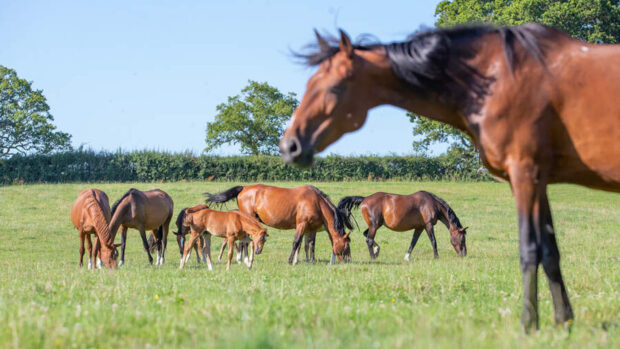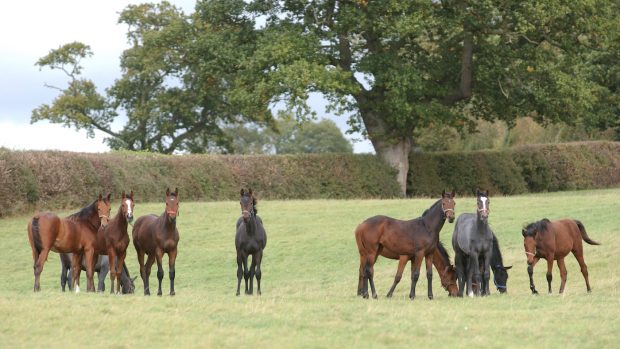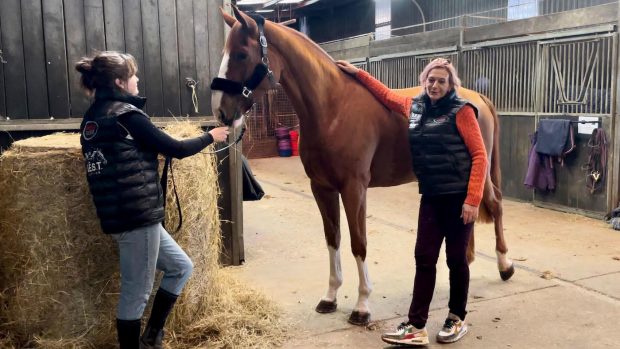On our yard we have three big barns with 14x16ft Loddon boxes. They have rubber floors and close-circuit monitoring. We also have three large, deep-litter “loose-housings” for young stock, which range in size up to 40x40ft.
We use stocks from Monarch for all scanning and artificial insemination procedures, because we only use stallions based in Germany. The stocks are de-rigueur for the safety of our vets.
We are fortunate to have undercover parking for our Oakley horsebox, which takes four large horses and has air suspension to lower the angle of the ramp, which is useful for loading foals.
Our 35 acres of paddocks are fenced with Fieldguard electric — the safest fencing in our experience. In addition, we have a round pen and a sand and rubber outdoor school.
Straw and bedding
We live in a predominantly dairy farm area, and good wheat straw was scarce last year — so much so that we drove to Cambridgeshire and bought in our whole winter’s supply in September.
In boxes with rubber flooring, we use Bliss bedding, made from chopped rapeseed straw. It’s made locally in Ashbourne, and we prefer it to shavings.
Feed
We feed ad lib haylage, either in extra large “small hole” nets, or our home-made round feeders in the loose-houses. I make these with two sheets of Stokboard —
a recycled plastic sheet similar in its properties to plywood — bolted together. They are durable, safe and serve as a “roundabout” if any bullying takes place.
I’m a fan of Baileys Gro’N Win mare and foal balancer, and we make up our own mix using Alfafa nuts, soya and oats, which are grown locally and which we crush ourselves.
We feed Dengie pasture blocks to the horses in the loose-housings, and my 22-year-old Farvis boiler is still going strong, so we boil up barley and linseed mashes for the horses that are living out.
Foals get Prokolin, a probiotic with kaolin and pectin, if they scour when their dam comes in season.
Equipment
We believe bits are for riding, so young stock wear a bridle and bit, but are handled and shown in a Natural Horsemanship halter worn underneath the bridle. Too many mouths are ruined before an animal is even sat on, and this stops pressure on the bars of the mouth.
We like many aspects of natural horsemanship and use the halters and 12ft ropes from Parelli for handling. These ropes are virtually unbreakable and allow horses the freedom to follow you rather than be led. They are ideal lengthwise if you suddenly have to hang on to a naughty, leaping youngster.
Young stock that are loose-housed by age group are chaperoned by an older mare. She teaches manners and respect, but for safety’s sake she wears felt kicking boots as an “insurance” against kicks.
|
||
 |
||


 Get up to 19 issues FREE
Get up to 19 issues FREE TO SUBSCRIBE
TO SUBSCRIBE 


